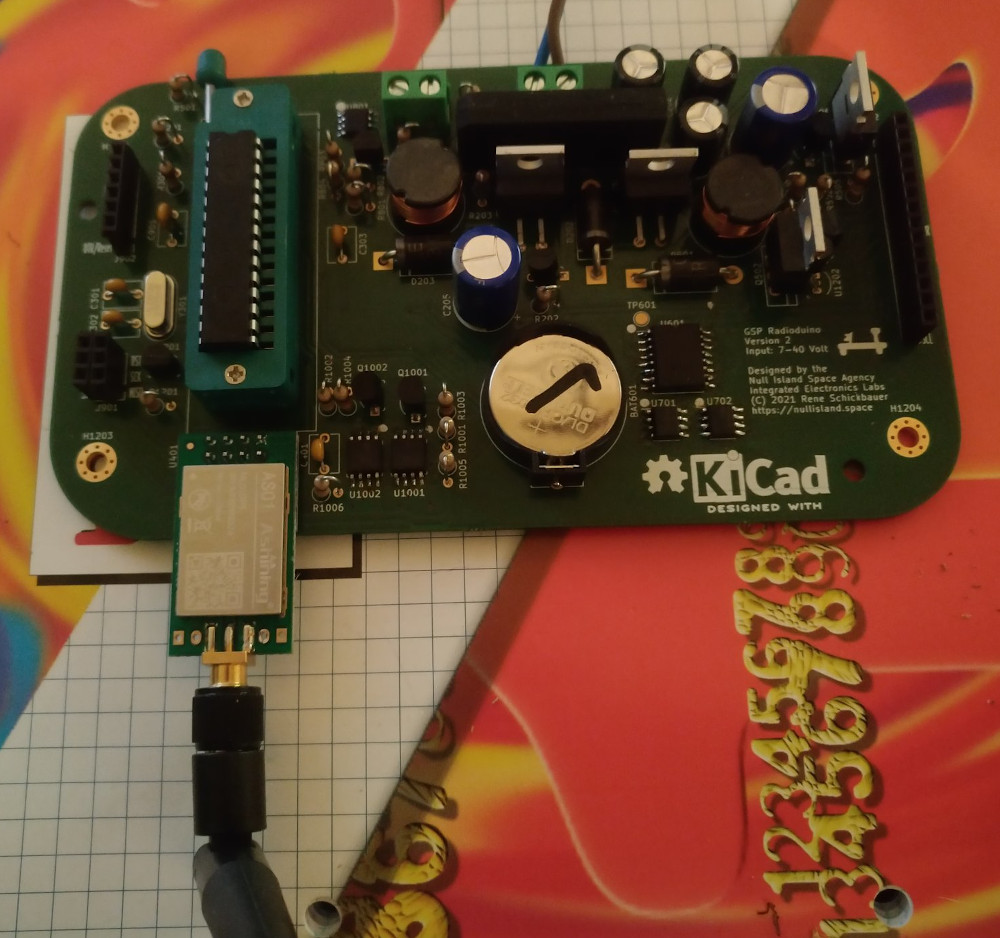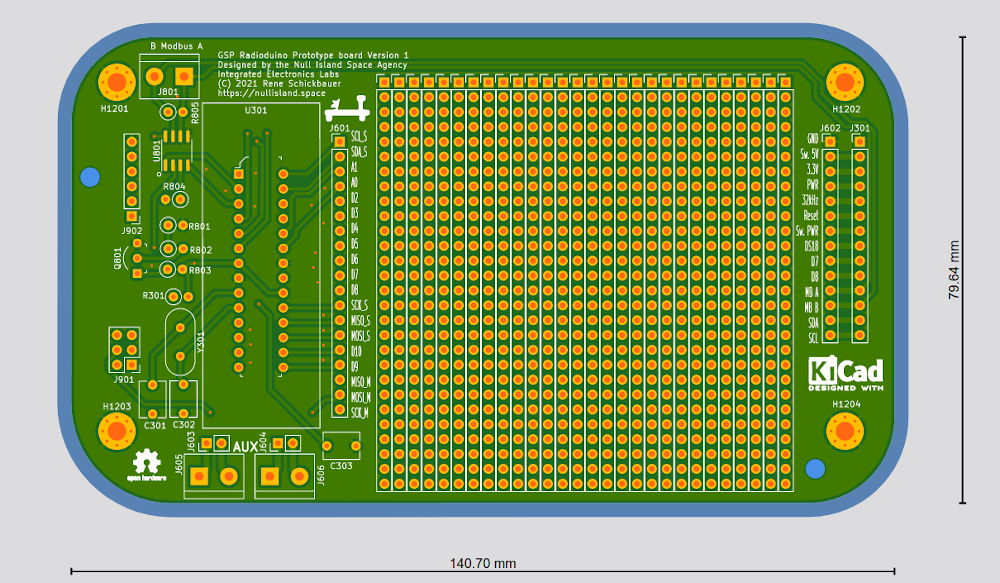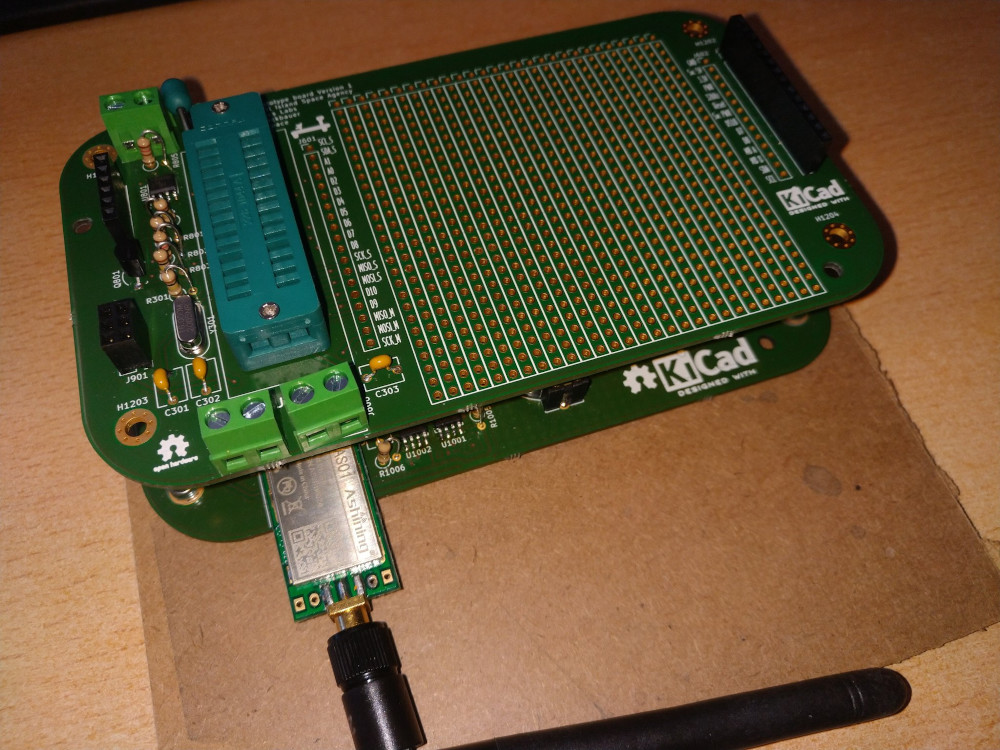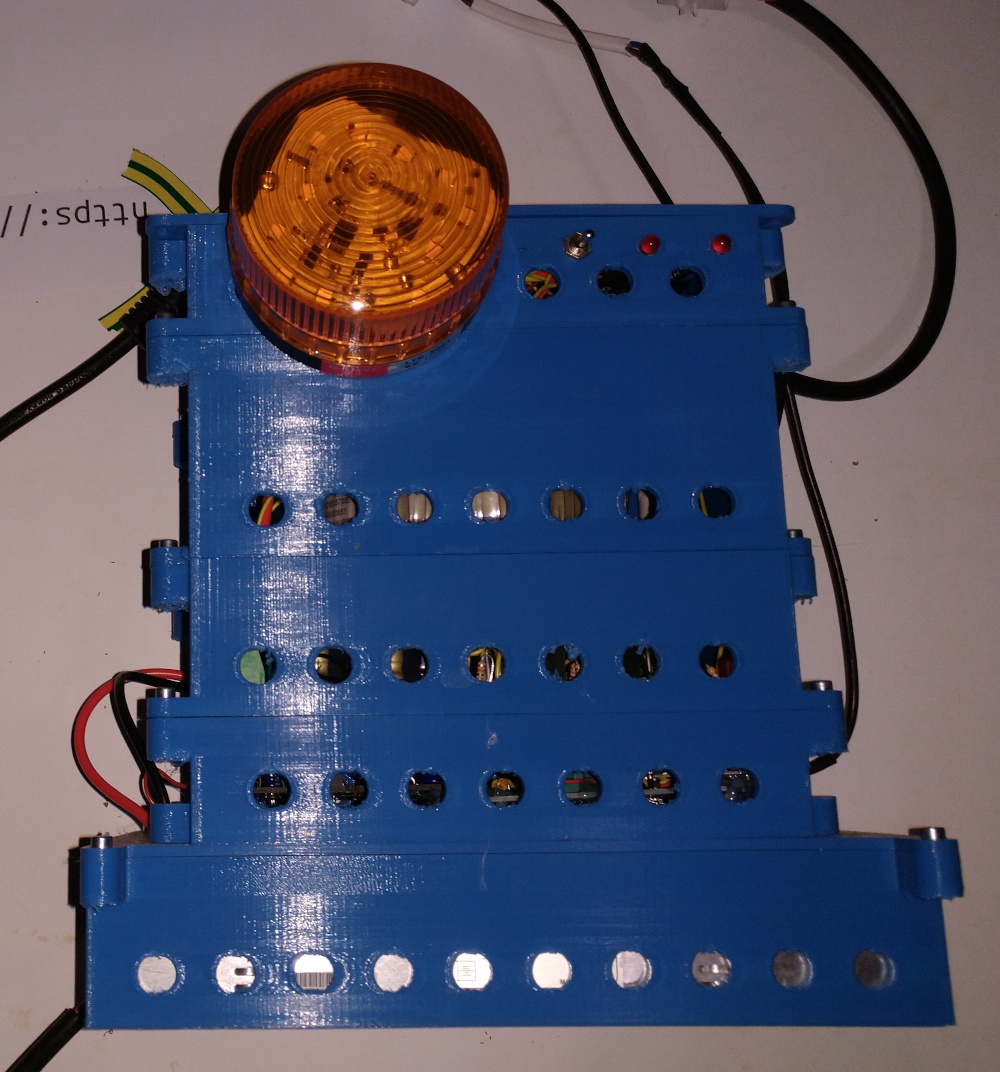After many months of work, i'm finally able to release Radioduino.
This article will get updated in the future to keep up with the project progress.
Features
What is a "Radioduino", you may ask. Well, it's an Arduino clone that is optimized to run on solar power and includes the nRF24 radio system to communicate. It includes proper power managment, deep sleep modes and much more
As with other Arduino types, it is designed with expansion in mind.But instead of piling all the sensor stuff into a single Atmega chip (which makes complex projects very tedious), it supports smart addon boards called "legs".
The base Radioduino does the radio communication, runs the power managment and acts as RS485/Modbus master. It has a proper, efficient voltage regulator and can switch power to the "legs" expansion boards. It has a fully integrated, battery backed real time clock module to wake it from deep sleep (very low power mode), has 256kB onboard EEPROM, 16kB of high endurance/high write cycle FRAM and onboard RS485/Modbus.
The board can also support a ZIF socket (zero insertion force/quick access) for the Atmega chip for development as well as in-the-field update.
Pictures


Source code and Hardware designs
You can find all source code and hardware designs for the Radioduino project at https://cavac.at/public/mercurial/radioduino/file/tip
To check out a local copy, run
hg clone https://cavac.at/public/mercurial/radioduino/
on the command line.
Legs / Expansion boards
Prototyping board
The new prototyping board prototype (i need better names...) has just hit manufacturing. It includes all the "smart" of a Radioduino expansion board (Atmel processor, RS485, power managed by base Radioduino) and a fairly decent prototype area. As a bonus, a couple of freely usable screw terminals for external connections are included on the PCB.


8 channel power switch
This is in a very early prototype stage and is currently used in a hand-wired version in Solstice. A PCB version is currently in the works.

Programmable low power inverter
I have a hand-wired version of a programmable low power inverter (modified sinus, variable frequency, variable voltage) in my lab bench power supply. I'm currently working on an improved circuit and turning into a Radioduino module.

Support this project
Developing hardware and software is quite expensive. There are a couple of ways of supporting me and this project.
|





